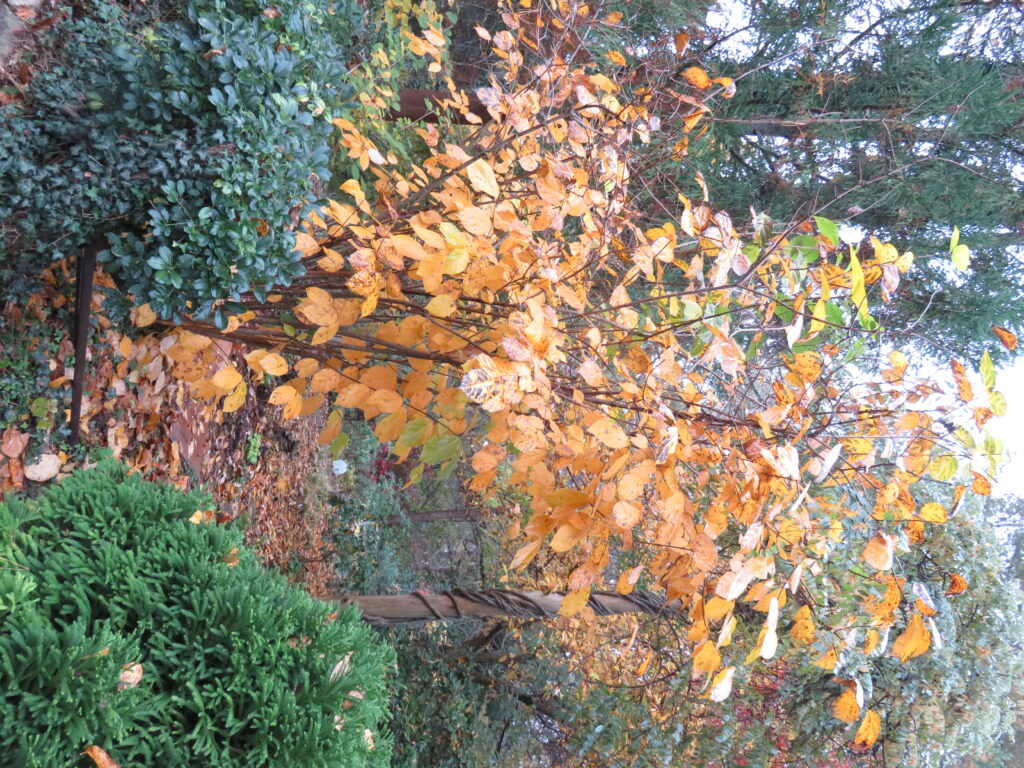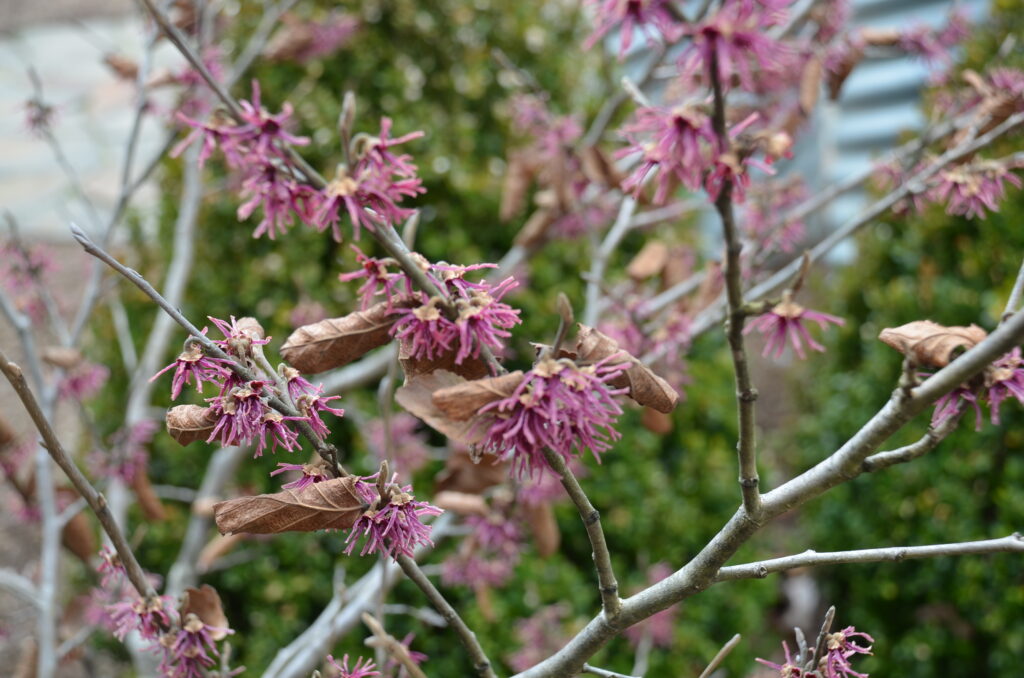
This winter – follow your nose to Vernal witchhazel (Hamamelis vernalis), aka Ozark witchhazel. (USDA zones 4-8). This U.S. native witchhazel grows as a deciduous shrub to small tree. It may produce the smallest flowers of all witchhazel species, but they’re highly fragrant when little else is blooming. It naturally inhabits a wide area encompassing from southern Missouri to northwestern Arkansas and eastern Oklahoma.
New leaves emerge bronze to reddish purple and fall foliage finishes golden brown and often persists into early winter. Leaves are almost circular, measuring 2.5 to 5 inches long and wide, with a slightly oblique base and leaf tips are acute or rounded. Leaves are dark green above and glaucous beneath with a wavy-toothed or shallowly lobed margin and short, stout petiole.
Its dark yellow (gold) blooms appear from January to March and age to dusky red. Flowers are comprised of four narrow ribbon-like petals, barely ¼ to 1/3 inches long with four short stamens. On warm 50°F winter days, watch for bees buzzing around the fragrant blooms.
Tiny individual fruits (3⁄8–5⁄8 inch long) are hard woody capsules that split open to explosively at the apex at maturity one year after pollination, each one ejecting two shiny black seeds 30 or more feet from the parent plant. Three vernal witchhazel cultivars are:
‘Amethyst’ – has a rounded form, 8 to 10 feet tall and wide, and gray-green spring/summer foliage that turns a brilliant red and orange in autumn. Deep red purple flowers are lightly fragrant and finish reddish purple in mid-winter.
‘Quasimodo’ – a semi-dwarf selection (4 to 6 feet tall) introduced from a European nursery industry in 1980. Light orange flowers are highly fragrant, and compact-spreading habit. Spring foliage is rich greenish-blue and stays quite attractive throughout the growing season.
‘Sandra’- grows 6-10 feet tall and 8-10 feet wide with fragrant golden strap-like flowers from mid-winter to the first days of spring.

Vernal witchhazel spreads underground slowly via stoloniferous root shoots. Annual maintenance other than pruning is unnecessary. Maintain the natural shape of the shrub and rein in its root suckering to fit its intended landscape space. Annual fertilizing is generally unnecessary. If the summer foliage became chlorotic (yellow), apply 1-2 handfuls of elemental sulfur in the fall or feed with an acidic fertilizer like Miracle-Gro or Schultz in spring and early summer. Apply 3-4 inches of bark mulch or pine needles in spring.
Where to purchase: online native plant nurseries.

 Posted in
Posted in 
